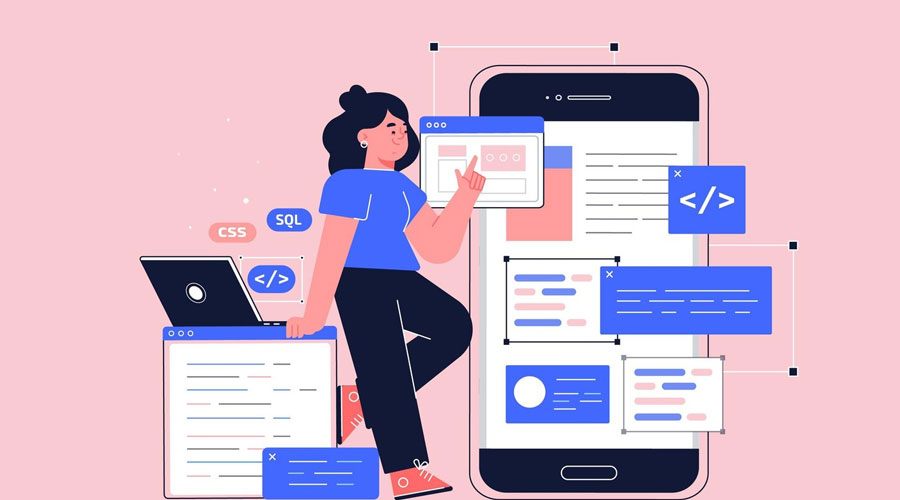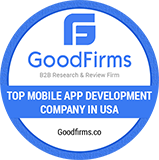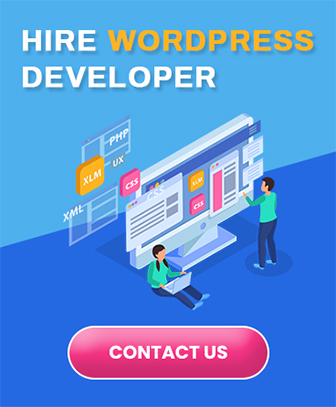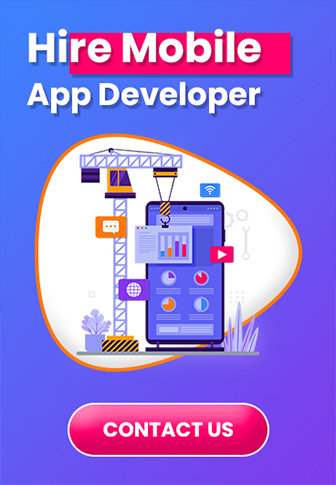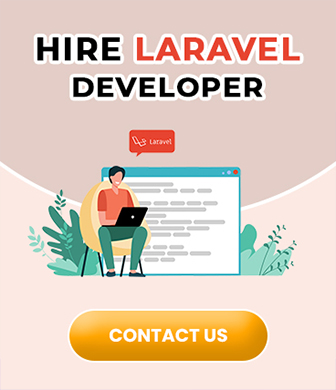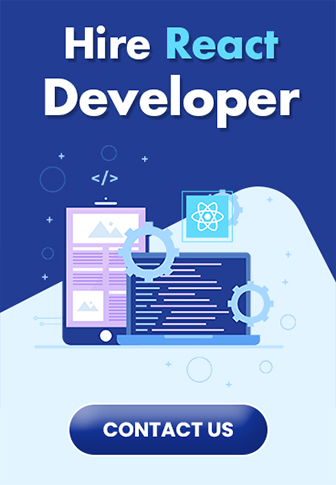Table of Contents
Introduction
As we delve deeper into the world of health and fitness apps, it’s essential to recognize the evolution of these digital tools over the years. The journey from basic calorie counters to sophisticated, AI-driven wellness platforms has been nothing short of remarkable. In this addendum, we will trace the timeline of health and fitness app development to appreciate how far we’ve come.
I. The Pioneering Phase: Calorie Counters and Basic Workouts
The concept of health and fitness apps can be traced back to the early 2000s when mobile technology was in its infancy. The initial apps were relatively basic, focusing on simple functions like calorie counting and basic workout tracking. These apps laid the foundation for what would later become a thriving industry.
A. Calorie Counters: Some of the earliest health apps allowed users to input their daily food consumption and provided estimates of calorie intake.
B. Workout Logs: Basic workout apps enabled users to log their exercise routines and track their progress.
II. The App Boom: Growth and Diversification
The real surge in health and fitness app development came with the proliferation of smartphones and the adoption of app stores. This period, spanning roughly from 2008 to 2015, witnessed the emergence of a diverse range of apps, each catering to specific fitness needs and goals.
A. Nutrition Tracking: Apps like MyFitnessPal and Lose It! gained popularity by offering comprehensive food databases, making it easier for users to track their dietary intake.
B. Workout Guidance: Personal trainers, workout routines, and exercise demos found their way into mobile apps, providing users with structured fitness guidance.
C. GPS and Activity Tracking: The integration of GPS technology allowed apps to track outdoor activities like running and cycling accurately.
D. Wearable Compatibility: Health apps started integrating with wearable devices, such as Fitbit and Apple Watch, offering real-time health and fitness data.
III. The Modern Era: AI, Gamification, and Personalization
Today, health and fitness apps have reached a level of sophistication that was once unimaginable. The incorporation of artificial intelligence, gamification, and hyper-personalization has transformed these apps into powerful tools for well-being.
A. Artificial Intelligence: AI is now being used to analyze user data and provide personalized recommendations, such as workout plans and dietary advice.
B. Gamification: The use of gamification elements, like rewards, challenges, and virtual badges, has made fitness more engaging and motivating.
C. Telemedicine and Virtual Coaching: The COVID-19 pandemic accelerated the adoption of telemedicine in health apps, enabling users to consult with healthcare professionals virtually.
D. Mental Health and Mindfulness: Mental well-being has taken center stage, with apps offering guided meditation, stress management, and sleep tracking.
IV. The Future: Integration and Holistic Wellness
Looking ahead, the future of health and fitness apps appears promising and transformative. Developers are focusing on holistic wellness, aiming to integrate physical, mental, and emotional well-being into a seamless user experience.
A. Integration with Healthcare Systems: Health apps are likely to become an integral part of healthcare systems, providing doctors with real-time patient data and insights.
B. Biofeedback and Wearables: As wearable technology advances, apps will have access to more comprehensive health data, enabling better monitoring and guidance.
C. Predictive Health Analytics: Advanced AI and machine learning will enable apps to predict health issues and provide preventive measures.
D. Personalized Medicine: Health apps will increasingly personalize medical treatment and wellness plans based on individual genetic and health data.
E. Global Accessibility: Developers will work towards making these apps more accessible to a global audience, transcending language and cultural barriers.
Market Analysis
To gain a comprehensive understanding of the health and fitness app development market, it’s essential to delve deeper into its current state, growth prospects, and potential challenges. This market analysis will explore various facets of the industry, including market size, key players, emerging trends, and future opportunities.
I. Market Size and Growth
The health and fitness app development market has been on a robust growth trajectory in recent years, and this trend is expected to continue. Here are some key insights into the market size and growth:
A. Market Size
- According to a report from Research and Markets, the global fitness app market size was estimated at $3.3 billion in 2020.
- The market is projected to grow at a CAGR of over 21% from 2021 to 2028, reaching an estimated value of $14.7 billion by the end of this period.
- The COVID-19 pandemic has further accelerated the adoption of health and fitness apps, as people turned to digital solutions to maintain their fitness and well-being during lockdowns.
B. Key Drivers of Growth
- Increasing Health Awareness: A growing emphasis on health and well-being is driving more individuals to seek fitness solutions, contributing to the rise in app usage.
- Smartphone Penetration: The proliferation of smartphones and wearable devices has expanded the potential user base for health and fitness apps.
- Personalization: Users are seeking tailored fitness and health solutions, which is spurring the development of more personalized apps.
II. Key Players in the Market
Several major players dominate the health and fitness app development market. These companies offer a wide range of apps and have a significant impact on the industry. Some of the key players include:
A. Fitbit, Inc.
Fitbit is a well-known brand in the fitness tech industry. They offer a range of fitness trackers and a companion app to track activity, sleep, and nutrition.
B. MyFitnessPal
MyFitnessPal is a popular app for tracking diet and exercise. It offers a vast food database and integration with other fitness apps and devices.
C. Nike Training Club
Nike Training Club provides a variety of workout routines and training plans. It’s renowned for its high-quality video content and athlete-led workouts.
D. Apple Health and Fitness
Apple’s Health and Fitness app ecosystem is a significant player in the market. It combines the Health app to track health data and the Fitness app to deliver guided workouts.
E. Peloton
Peloton offers a unique approach to fitness with its connected exercise equipment and subscription-based service. It has gained immense popularity for its live and on-demand workouts.
III. Emerging Trends in Health and Fitness App Development
The health and fitness app development market is constantly evolving. Here are some emerging trends:
A. Remote Fitness and Telemedicine
The COVID-19 pandemic accelerated the integration of telemedicine and virtual coaching within fitness apps. Users can now access professional guidance remotely, making it more convenient and safe.
B. Integration with Wearable Devices
Wearable technology, such as fitness trackers and smartwatches, is increasingly integrated with health and fitness apps. This trend offers users real-time data, enhancing their overall fitness experience.
C. Artificial Intelligence and Machine Learning
The integration of AI and machine learning enables apps to provide more personalized recommendations, analyze user data for insights, and predict potential health issues.
D. Gamification
Gamification elements, such as challenges, rewards, and social interactions, make fitness more engaging and fun, leading to better user retention.
E. Nutrition and Dietary Planning
Apps are now expanding to include features for meal planning and tracking nutrition. This trend assists users in maintaining a well-rounded approach to health and fitness.
IV. Challenges and Opportunities
The health and fitness app development market presents both challenges and opportunities for developers and entrepreneurs:
A. Challenges
- Data Privacy and Security: Ensuring the security and privacy of user data is a primary concern, especially when dealing with health information.
- User Engagement: Sustaining user interest and engagement over time can be challenging. Developers must continuously offer new and exciting features.
- Competition: The market is highly competitive, and standing out requires innovation and a unique value proposition.
B. Opportunities
- Niche-Specific Apps: Developers can target specific niches within the health and fitness industry to cater to specialized user needs.
- Integration with Healthcare Systems: Partnerships with healthcare providers can lead to apps that seamlessly integrate with medical records and improve patient care.
- Personalization: The use of AI and machine learning can enhance personalization, providing users with more tailored experiences.
- User Education: Apps that offer educational content on health, fitness, and nutrition can become trusted sources of information, enhancing user engagement.
- Accessibility: Focusing on making health and fitness apps inclusive and accessible to a broader audience, including people with disabilities, can create new opportunities.
App Development Technologies
App development has evolved significantly over the years, with a wide array of technologies available to build mobile, web, and desktop applications. Choosing the right technology stack is critical for the success of any app development project. In this article, we will explore various app development technologies, their pros and cons, and when to use them.
I. Native App Development
Native app development involves building applications for specific platforms, such as iOS (using Swift or Objective-C) and Android (using Java or Kotlin). Here are the key aspects of native app development:
Pros:
- Performance: Native apps are known for their high performance since they are optimized for the target platform.
- Access to Platform Features: Developers have full access to platform-specific features and APIs.
- Smooth User Experience: Native apps provide a seamless and native user experience.
Cons:
- Platform-Specific Development: Developing for multiple platforms requires separate codebases and expertise.
- Higher Development Costs: Maintaining two separate codebases (iOS and Android) can be expensive.
- Slower Development Process: Creating and updating two separate apps can be time-consuming.
When to Use: Choose native app development when performance, access to platform-specific features, and a native user experience are top priorities. This is especially relevant for apps that require complex functionality or extensive use of device hardware.
II. Cross-Platform Development
Cross-platform app development enables developers to write code once and deploy it on multiple platforms. Some popular cross-platform development frameworks include React Native, Flutter, and Xamarin.
Pros:
- Code Reusability: Developers can reuse a significant portion of the code across different platforms.
- Faster Development: Cross-platform development generally leads to quicker development cycles.
- Cost-Effective: Building and maintaining a single codebase reduces development costs.
Cons:
- Performance Variability: Cross-platform apps may not achieve the same level of performance as native apps.
- Limited Access to Native Features: Access to platform-specific features may be limited or require additional work.
- Third-Party Dependencies: Cross-platform frameworks often rely on third-party libraries, which can introduce compatibility issues.
When to Use: Opt for cross-platform development when time-to-market and cost-effectiveness are crucial. Cross-platform is a solid choice for less resource-intensive apps or when reaching a broader audience is a priority.
III. Web App Development
Web apps are accessed through web browsers and are typically built using web technologies like HTML, CSS, and JavaScript. They are not native to a particular platform, making them accessible from any device with a web browser.
Pros:
- Cross-Platform Compatibility: Web apps are accessible from any device with a web browser.
- Easier Maintenance: Updates are instant for all users as the app resides on a web server.
- Cost-Effective: Building a web app is often more cost-effective than native development.
Cons:
- Limited Offline Functionality: Web apps require an internet connection to function, limiting offline capabilities.
- Performance Constraints: Web apps may not perform as well as native or cross-platform apps.
- Limited Access to Device Features: Access to device features (e.g., camera or GPS) is limited compared to native apps.
When to Use: Consider web app development for content-heavy, information-sharing platforms or when a broad and diverse audience is the target. Web apps are suitable for projects with budget constraints or when rapid deployment is necessary.
IV. Progressive Web Apps (PWAs)
Progressive web apps are web applications that offer a more app-like experience to users. They can be installed on the user’s device and function offline to some extent. PWAs are built with web technologies like HTML, CSS, and JavaScript.
Pros:
- Cross-Platform: PWAs work across different platforms and browsers.
- Offline Functionality: PWAs offer limited offline functionality, making them suitable for users with intermittent connectivity.
- Low Development and Maintenance Costs: Development and maintenance costs are relatively low.
Cons:
- Limited Access to Native Features: PWAs have limited access to device features compared to native apps.
- Performance: While PWAs offer better performance than traditional web apps, they may not match the speed of native apps.
When to Use: PWAs are a good choice when you want the reach of a web app but need offline functionality or a more app-like experience. They are suitable for content-driven platforms, e-commerce, and informational websites.
V. Backend Technologies
The choice of backend technology is crucial for app development, as it determines how the app communicates with servers and databases. Some popular backend technologies include Node.js, Ruby on Rails, Django, and .NET.
Pros:
- Scalability: Many backend technologies are highly scalable, allowing your app to grow with the user base.
- Data Management: Effective data management and storage capabilities are essential for apps.
- Security: Backend technologies offer various security features, including authentication and data encryption.
Cons:
- Learning Curve: Some backend technologies may have a steep learning curve.
- Development Time: Choosing the right backend technology and setting it up can add time to the development process.
- Costs: Backend technologies often require hosting and maintenance costs.
When to Use: Select the appropriate backend technology based on your project’s requirements. Node.js, for instance, is known for its real-time capabilities, while Ruby on Rails is praised for rapid development.
Key Features and Functionalities
let’s delve deeper into the key features and functionalities that can make a health and fitness app stand out in the market:
- Comprehensive Health Profile Creation: Users should be able to create a detailed profile with personal information, fitness goals, and medical history. This information can be used to tailor workout and nutrition plans.
- Workout Library: A diverse library of workout routines, including strength training, cardio, yoga, and more, with varying difficulty levels. These routines should be illustrated with step-by-step instructions and videos.
- Nutrition Database: Integration with a vast food database, allowing users to track their calorie intake, macronutrients, and micronutrients. The app can also suggest meal plans based on dietary preferences and restrictions.
- Customized Workout Plans: Users can set their fitness goals (e.g., weight loss, muscle gain, or stress reduction) and receive personalized workout plans that adapt as their fitness level improves.
- Progress Tracking and Analytics: Users should be able to log and track their workouts and nutrition, with visual graphs and statistics showing their progress over time. This data can help users understand what’s working and what needs improvement.
- Wearable Device Integration: Seamless integration with fitness trackers, smartwatches, and other wearable devices to monitor real-time data, such as heart rate, steps taken, and sleep patterns. This data can be used to offer more accurate insights and recommendations.
- Community and Social Features: Features like in-app messaging, challenges, forums, and the ability to connect with friends and share achievements. This fosters a sense of community and accountability.
- Gamification Elements: Incorporating gamification elements, like earning badges, completing challenges, and setting rewards for milestones achieved, to keep users engaged and motivated.
- Health Metrics Monitoring: The app can track and display key health metrics, such as BMI, body fat percentage, and blood pressure, helping users gain a holistic view of their health.
- Meal Planning and Grocery Lists: Offering users the ability to plan their meals and generate shopping lists based on their dietary preferences and goals, making it easier to stick to a healthy eating plan.
- Mental Health and Stress Management: Beyond physical fitness, the app can include features like meditation guides, stress reduction exercises, and mental health tracking to address the holistic well-being of users.
- Wearable Device Integration: Seamless integration with fitness trackers, smartwatches, and other wearable devices to monitor real-time data, such as heart rate, steps taken, and sleep patterns. This data can be used to offer more accurate insights and recommendations.
- Virtual Coaching and Telemedicine: The option to connect with professional trainers, nutritionists, or even schedule virtual appointments with healthcare providers for more personalized guidance and consultations.
- Personalized Insights: Utilize artificial intelligence and machine learning to analyze user data and provide personalized insights and recommendations for workouts, nutrition, and health improvements.
- Offline Access: Some features, especially workout routines and nutrition plans, should be accessible offline, ensuring users can access their data even when they don’t have an internet connection.
- Push Notifications and Reminders: The app should send timely reminders for workouts, meal planning, hydration, and other health-related tasks to keep users on track.
- Accessibility Features: Ensure the app is accessible to users with disabilities by incorporating features like voice-guided workouts, larger text, and compatibility with screen-reading software.
- Data Privacy and Security: Implement robust security measures to safeguard user data, including end-to-end encryption, two-factor authentication, and compliance with data protection regulations.
- Multilingual Support: To reach a global audience, provide support for multiple languages and regional preferences, including units of measurement and dietary recommendations.
- Feedback and Support: Offer a user-friendly customer support system within the app, where users can seek assistance, provide feedback, and report issues or bugs.
By incorporating these key features and functionalities, developers can create a health and fitness app that not only attracts users but also keeps them engaged on their journey towards a healthier and happier life.
Marketing and Promotion
Developing a top-notch health and fitness app is just the beginning. To ensure that your app reaches its full potential and makes a significant impact, effective marketing and promotion are essential. In this section, we will explore the key strategies to successfully market and promote your health and fitness app.
I. Understanding Your Target Audience
Before diving into marketing and promotion, it’s crucial to have a clear understanding of your target audience. Your app’s features, design, and content should align with the needs and preferences of your users. Identify your ideal users’ demographics, interests, pain points, and goals.
A. User Personas
Create user personas that represent your target audience. This will help you tailor your marketing messages and promotion strategies to appeal directly to these individuals.
B. Market Research
Conduct in-depth market research to understand your competitors and the current trends in the health and fitness app industry. Identify gaps in the market that your app can fill.
II. App Store Optimization (ASO)
To ensure your app gets noticed, it’s essential to optimize its presence on app stores. ASO is a set of strategies aimed at improving your app’s visibility and discoverability.
A. App Title and Description
Choose a clear, concise, and keyword-rich title for your app. Craft a compelling app description that highlights its unique features and benefits.
B. App Icon and Screenshots
Design an eye-catching app icon that conveys the essence of your app. Use high-quality screenshots that showcase the user interface and key features.
C. Keywords and Categories
Select relevant keywords for your app and include them in your app’s metadata. Choose the appropriate category and subcategories to help users find your app easily.
D. Ratings and Reviews
Encourage users to leave positive reviews and ratings. Respond to user feedback promptly and professionally to build trust.
III. Content Marketing
Content marketing is a powerful tool to engage and educate your target audience. Providing valuable content can establish your app as a trusted source of information.
A. Blog Posts
Publish informative blog posts on your website or within the app. Share tips, workouts, recipes, and health-related articles.
B. Video Content
Create engaging videos that showcase workouts, healthy recipes, app tutorials, and success stories. Share these videos on platforms like YouTube and social media.
C. Social Media
Leverage social media platforms to share content, engage with users, and build a community. Use relevant hashtags and encourage user-generated content.
D. Email Marketing
Build an email list and send regular newsletters with app updates, fitness tips, and exclusive offers to keep users engaged.
IV. Influencer Marketing
Collaborating with influencers in the health and fitness industry can help you reach a broader audience and build credibility.
A. Identify Influencers
Find influencers whose values align with your app’s mission and vision. Look for individuals with a genuine interest in health and fitness.
B. Partnerships
Form partnerships with influencers to promote your app. They can create content, reviews, or tutorials that highlight the app’s benefits.
C. Sponsored Posts
Sponsorship of posts or stories on social media can provide exposure to the influencer’s followers.
V. User Engagement and Retention
Retaining your existing users is as important as acquiring new ones. Engage your users to keep them active and enthusiastic about your app.
A. Push Notifications
Send personalized push notifications to remind users of workouts, provide tips, and offer encouragement.
B. In-App Challenges
Create in-app challenges and competitions to keep users motivated and connected with the app.
C. Loyalty Programs
Reward loyal users with exclusive features, discounts, or premium subscriptions.
D. Feedback Loop
Regularly gather feedback from users and implement improvements based on their suggestions.
VI. Performance Marketing
Performance marketing strategies focus on measurable results and return on investment (ROI).
A. Pay-Per-Click (PPC) Advertising
Run targeted PPC ads on search engines and social media to drive traffic to your app’s landing page.
B. App Install Campaigns
Use app install campaigns on platforms like Facebook and Instagram to encourage downloads.
C. Affiliate Marketing
Set up an affiliate program where partners promote your app and earn commissions for each successful referral.
D. Analytics and Tracking
Use analytics tools to monitor user behavior, campaign performance, and ROI. Adjust your marketing strategies based on the data.
VII. PR and Media Outreach
Generate buzz around your app through public relations and media outreach.
A. Press Releases
Create and distribute press releases about app updates, milestones, or partnerships to relevant media outlets.
B. Bloggers and Review Sites
Reach out to health and fitness bloggers and review sites to request reviews and features on your app.
C. Public Speaking
Participate in industry events, webinars, or podcasts to share your expertise and promote your app.
Case Studies
let’s delve into a couple of case studies to illustrate the impact and success of health and fitness app development.
Case Study 1: MyFitnessPal
Background: MyFitnessPal is a widely recognized and popular health and fitness app that focuses on nutrition tracking and calorie counting. The app was developed by MyFitnessPal Inc. and later acquired by Under Armour.
Success Factors:
- Comprehensive Database: MyFitnessPal offers a vast database of food items, making it easy for users to log their meals and track their calorie intake accurately.
- Integration: The app integrates with a wide range of fitness trackers and other health apps, allowing users to centralize their health data.
- Social Engagement: MyFitnessPal has a strong social aspect, allowing users to connect with friends, share achievements, and join challenges. This keeps users engaged and motivated.
- Free and Premium Versions: The app provides a free version with essential features, while the premium version offers more advanced tools and an ad-free experience, creating a viable revenue stream.
Results: MyFitnessPal has over 200 million registered users and is considered one of the top health and fitness apps. Its success lies in the user-friendly interface, a robust and ever-expanding database, and the sense of community it fosters among its users.
Case Study 2: Fitbit
Background: Fitbit, known for its wearable fitness trackers, expanded into health and fitness app development. The app is designed to work seamlessly with Fitbit’s hardware, tracking users’ physical activity, sleep, and more.
Success Factors:
- Wearable Integration: Fitbit’s app leverages its wearable devices to provide real-time data on steps taken, heart rate, sleep patterns, and more.
- Gamification: The app employs gamification elements, such as challenges and badges, to keep users engaged and motivated.
- Community: Fitbit has a strong community aspect where users can connect with friends and participate in challenges, fostering a sense of competition and camaraderie.
- Health Insights: Fitbit provides users with actionable insights and suggestions based on their data, helping them make informed decisions about their health.
Results: Fitbit’s health and fitness app complements its wearable devices, creating an ecosystem that encourages users to lead healthier lives. The app and the wearables have helped Fitbit capture a significant share of the fitness technology market.
Case Study 3: Peloton
Background: Peloton is known for its exercise bikes and treadmills, but it has also ventured into health and fitness app development. The Peloton app offers a wide variety of live and on-demand fitness classes, including cycling, running, yoga, strength training, and meditation.
Success Factors:
- Live Classes: The app offers live fitness classes, providing a sense of real-time community and accountability.
- Diverse Content: With a broad range of fitness classes, users can personalize their workouts to fit their preferences and goals.
- Integration: Peloton’s app can be integrated with its equipment, providing a seamless user experience.
- Multi-Platform Access: Users can access Peloton’s content not only on Peloton-branded equipment but also on various devices like smartphones, tablets, and smart TVs.
Results: Peloton’s health and fitness app complements its equipment offerings, allowing users to access professional fitness classes at home. The app has contributed to Peloton’s rapid growth, especially during the COVID-19 pandemic when home fitness solutions gained popularity.
These case studies highlight the diverse strategies employed by health and fitness app developers to succeed in a competitive market. Whether through extensive databases, wearable integration, gamification, social engagement, or live classes, these apps have managed to capture and retain a large user base, catering to the growing demand for health and fitness solutions in the digital age.
Future Trends
The world of health and fitness app development is evolving at a rapid pace. To stay ahead in this highly competitive industry, developers must be aware of and adapt to emerging trends. Let’s explore some future trends that are set to shape the landscape of health and fitness apps.
- Virtual Reality (VR) and Augmented Reality (AR): Virtual reality and augmented reality are poised to transform the way we exercise and experience fitness. VR workouts can transport users to immersive environments, making exercise more engaging and fun. AR can be used to overlay information, instructions, and virtual trainers in the user’s real-world environment, enhancing the workout experience.
- AI-Powered Personalization: Artificial intelligence is already a crucial component of many health and fitness apps, providing personalized workout and nutrition recommendations. In the future, AI will become even more sophisticated, considering individual preferences, biometrics, and even emotional states to tailor workouts and dietary plans.
- Health Analytics and Predictive Insights: Health apps will become more proactive in identifying health risks and providing predictive insights. By analyzing data collected over time, these apps can alert users to potential health issues and recommend actions to prevent them.
- Genomic Health and DNA Testing Integration: With the growing popularity of at-home DNA testing kits, health and fitness apps can integrate with these services to provide highly personalized health and fitness recommendations based on a user’s genetic makeup.
- Blockchain for Health Data Security: Concerns about data privacy and security will drive the adoption of blockchain technology in health and fitness apps. Blockchain can ensure the integrity and confidentiality of user data, allowing users to have greater control over their personal information.
- Mental Health and Stress Management: Mental health and stress management apps will continue to gain prominence as society recognizes the importance of mental well-being. These apps will provide features like guided meditation, stress tracking, and mood analysis.
- Wearable Ecosystem Expansion: The integration of health apps with wearables will become more comprehensive. Users will be able to seamlessly switch between devices, making data collection and tracking even more convenient and accurate.
- Regulatory Compliance: Governments and regulatory bodies are becoming more involved in the health app industry. Developers will need to ensure their apps comply with regulations related to user data, medical accuracy, and safety.
- Telehealth Integration: The line between health and fitness apps and telehealth services will blur further. Users will have access to virtual doctor appointments, prescription management, and lab result tracking through their fitness apps.
- Sustainable Fitness: In an era of increased environmental awareness, fitness apps may incorporate sustainability aspects. This could include workout plans that consider the environment, such as recommending outdoor workouts to reduce carbon footprint.
- AI-Powered Chatbots: Chatbots will not only assist with exercise and nutrition guidance but also provide real-time emotional support and motivation. These chatbots can detect user moods and adapt their responses accordingly.
- Health Gamification for Children: As childhood obesity remains a concern, health and fitness apps tailored for kids will incorporate gamification and educational elements to encourage physical activity and healthy eating habits.
- Inclusivity and Accessibility: Developers will place greater emphasis on making health and fitness apps accessible to individuals with disabilities, including those with visual or auditory impairments. This trend promotes a more inclusive approach to wellness.






